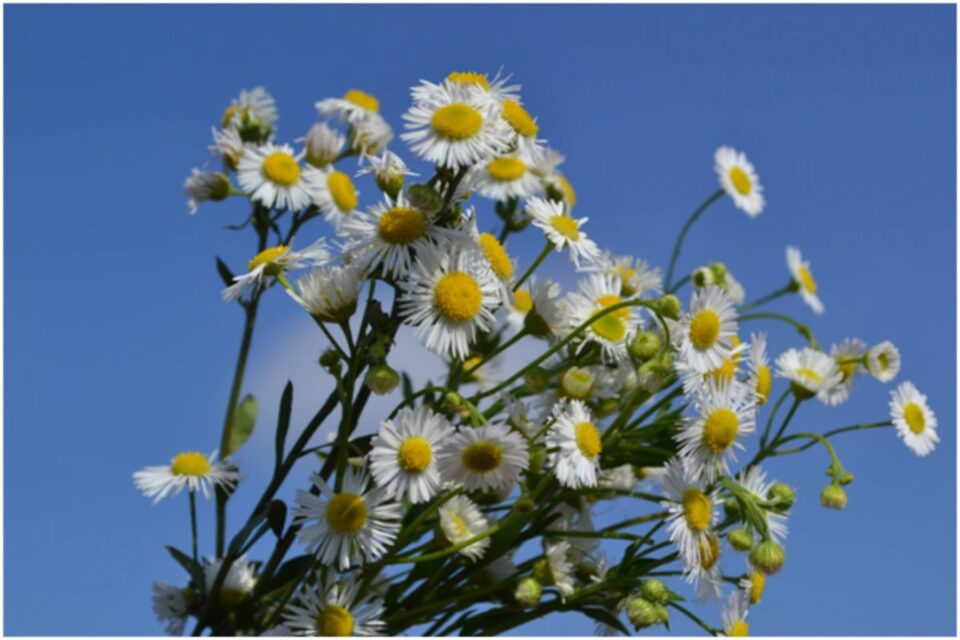Plants: Do you love drinking tea after a day of hard work? Do you also prefer that your food is eye-catching? If you constantly drink tea to remedy your ailments and like to add flowers to your food, then you’re in luck! You can now grow them in the comfort of your own home.
Indeed, iconic flower centerpieces on your dinner table or hallway bring the house together – it gives comfort to those who lay their eyes on it. But flowers on your food or tea are a way of accepting modernity; it is an innovative way of using plants. You can use edible flowers in different cuisines, and it is on different menus around the world.
Not all flowers or plants are safe to eat and drink, but rest assured that the five flowers mentioned below are commonly used for consumption.
Table of Contents
1. Chamomile (Matricaria chamomilla)
The flowers resemble daisies, but chamomiles are smaller. It blooms from May to September. Its leaves have a feathery appearance with a light green shiny color.
The flower has a sweet and earthy flavor once cooked or boiled down. It’s commonly used as chamomile tea, but you can turn it into syrups, add it into desserts, smoothies, or baked goods. When you plant a carpet of chamomile flowers, it can benefit you greatly. When turned into tea, women can reduce the pain they experience during menstruation; it can treat cold symptoms, lowers blood sugar, and relaxes, and helps in sleeping.
2. Hibiscus (Hibiscus rosa-sinensis)
Hibiscus flowers have a trumpet-shaped flower, and despite being large, it’s odorless. It has a wide array of colors from white, orange, yellow, red, blue, purple, and various shades of pink. These flowers are colorful and large and strive in warm climates. Hibiscus leaves are alternately arranged.
Hibiscus are frequently used for ornamental purposes, but it is also well known for its medicinal and culinary applications. You can eat the flower immediately after washing it; you can use it for tea, relishes, salads, or jam. Because of the flower’s medicinal applications, there are studies that hibiscus can reduce cholesterol levels and blood pressure.
When you boil the plant, it will boil down to a bright red color with a sour taste despite the color.
3. Dandelion (Taraxacum)
Dandelions are well-known as a stubborn weed in your gardens, but dandelions are more than that. Don’t remove them from your garden just yet, as they happen to be an edible flower, a highly nutritious one at that!
Dandelions have tiny blossoms which are 1 to 1.5 inches in diameter. It has small petals that are bright yellow. The flower is disk-shaped; it’s almost feathery. When a dandelion is gifted to another person, the loved one promises total faithfulness and a lifetime of happiness.
You can utilize the leaves, stems, and roots of dandelions, not just the flower. Dandelion flowers can be eaten raw, add in a salad, fry, or used to make jelly or wine. You can add the roots in your salad or as a sandwich topping, add in stews or casseroles, or any other recipe that’s full of greens.
4. Nasturtium (Tropaeolum)
This flower can grow in many places showcasing its sprouting tendrils and the majestic petals of the funnel-shaped flowers with colors that range from red, cream, pink, orange, or yellow tones. Because of its bright blossoms and unique flavor, it made its way to become a culinary favorite.
You can opt to use the leaves of this plant as it is edible. It has a slight spice to it and a peppery flavor used as a substitute in World War II. It makes for the perfect garnish in salads, pastries, and cakes. You may also blend it up and add it to your pesto.
Nasturtium’s leaves and flowers are filled with nutrition and high levels of iron and Vitamin C. It can improve your immune system, coughs, colds, and sore throats.
5. Lavender (Lavandula)
The last one of the herbal plants on this list, lavender flowers, has a color of lilac, violet, or blue. Despite being small, it is plentiful. It was initially grown in the Mediterranean and northern Africa. Lavenders can bloom from May to July, depending on what variety it is, and grow up to 0.4 meters in height.
You can use the nectar to make honey and add lavender to your food, including infused syrups, dry spice rubs, teas, herb mixtures, liqueurs, and most especially, baked goods. It’s best partnered with sweet and savory products, e.g., chocolate, sage, thyme, rosemary, berries, citrus, etc. Note that when you cook together with this herb plant, it’s best to include a small amount and increase slowly as it can be overpowering.
Lavender is best known for its distinctive fragrance that many studies found that provides calming effects. The patients in the intensive care unit in a study whose caretakers gave lavender oil are said to have alleviated their mood and anxiety. Additionally, its scent can scare off mosquitoes, flies, mice, and other pests in your garden. It can soothe your aching muscles and joints and induce sleep.
Takeaway
Herbal Plants: Enjoy the benefits of planting these five flowers in your garden. The flowers mentioned above can improve your health by eating them, laying your eyes on them, and so much more. Flowers are not just for decoration anymore; you can even eat them!

